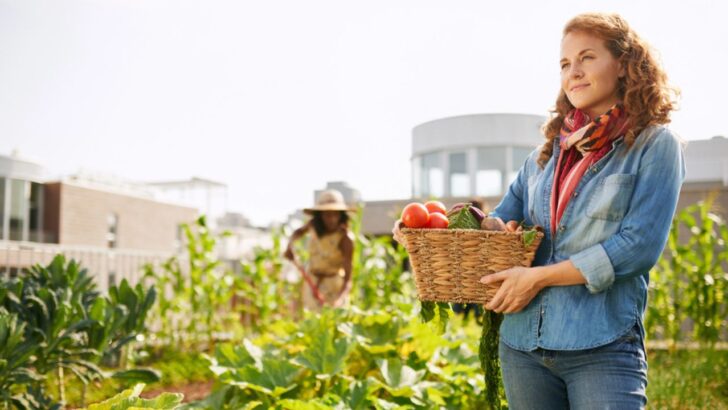Take a bird’s eye look at any city or urban environment and you’ll see a lot of one thing: empty rooftops. This is a lot of unused space that could be better put to work.
In populous cities around the world, a sizable population suffers from food insecurity. A recent United Nations report noted that “over 3/4 of the world’s food insecure population are in urban and peri-urban regions.” That comes out to 1.7 billion people.
Enter rooftop gardens. More than just decorative green space, these gardens foster a sense of community and help feed city residents, bridging the gap of food insecurity. Many are run by city organizations with volunteers doing the bulk of the work, though there are also working rooftop farms run by companies.
We dug a little deeper into the topic, reviewing reports and learning more about what exactly rooftop farming entails.
How Can Rooftop Farms Help?

Image Credit: Stock for you / Shutterstock.com.
Rooftop farms are just like the ones you see in the ground, but they take advantage of unutilized space. The purpose is to help fight food insecurity and get the community involved in the growing and harvesting of crops, bringing more awareness to problems cities face. The hope is rooftop farms can help bridge the gap and provide urban dwellers with more solutions.
Can Rooftop Gardens Provide a Steady Supply of Food?

Image Credit: Shutterstock.
When created and cared for properly, yes. In fact, in Oakland, California, a one-acre rooftop farm designed by Benjamin Fahrer of Top Leaf Farms and operated by the non-profit Deep Medicine Circle, produced 20,000 pounds of food in 2023. They gave a lot of the food away for free to residents of the city to promote food security.
It’s a dynamic set-up, however, that’s not the norm with rooftop farms. Most can help combat food insecurity but aren’t enough to solve the problem entirely.
Can Every Rooftop Become a Garden?

Image Credit: Jose L Vilchez / Shutterstock.com.
Not quite. As the video by Permaculture Instructor Andrew Millison made clear, roofs aren’t necessarily meant to bear a lot of weight. Structural enhancements are critical to avoid leaks and other damage. Smaller gardens or using planters on rooftops might be possible without these enhancements, but it’s important to ensure building codes are met and the roof can sustain the added weight.
Are There Other Benefits to Rooftop Farms?

Image Credit: Shutterstock.
There are, indeed, other benefits. According to James Coffman of Agritecture, an advisory and technology firm specializing in various agricultural sectors, they help promote green, eco-friendly environments. Coffman explains that bare rooftops retain heat, which contributes to energy usage.
In contrast, rooftop farms and gardens help cool the buildings they sit on, making them more efficient. They also contribute to green initiatives, helping to lower the carbon footprint. Additionally, and probably most importantly in the interim, these farms give city dwellers access to healthier food options, often for free or as payment for volunteering, which they wouldn’t otherwise be able to afford.
While they may not be the entire answer to the food insecurity problem plaguing urban areas, rooftop farms can bring a lot of good to cities. Whether cities will begin to utilize them more remains to be seen.


